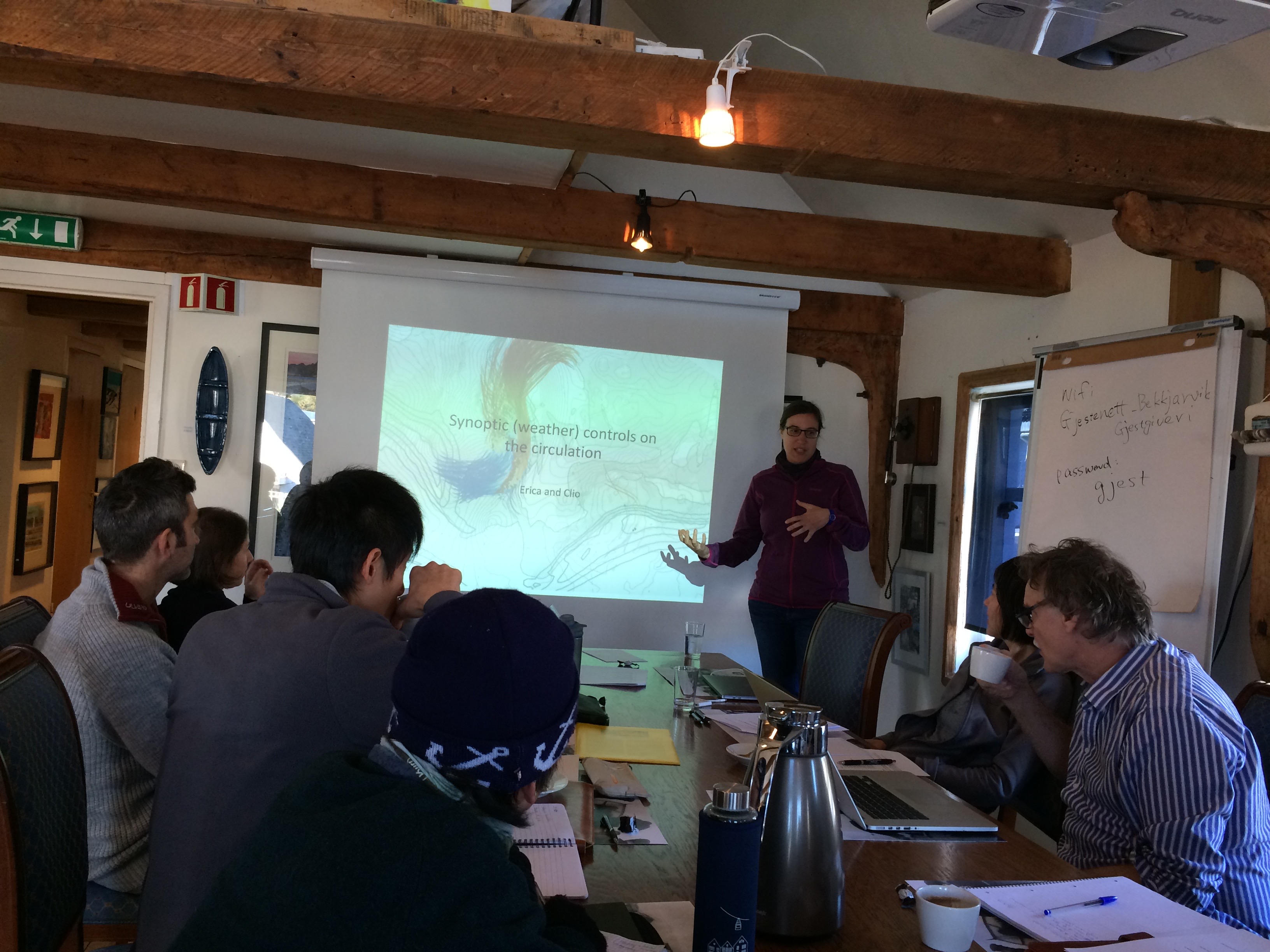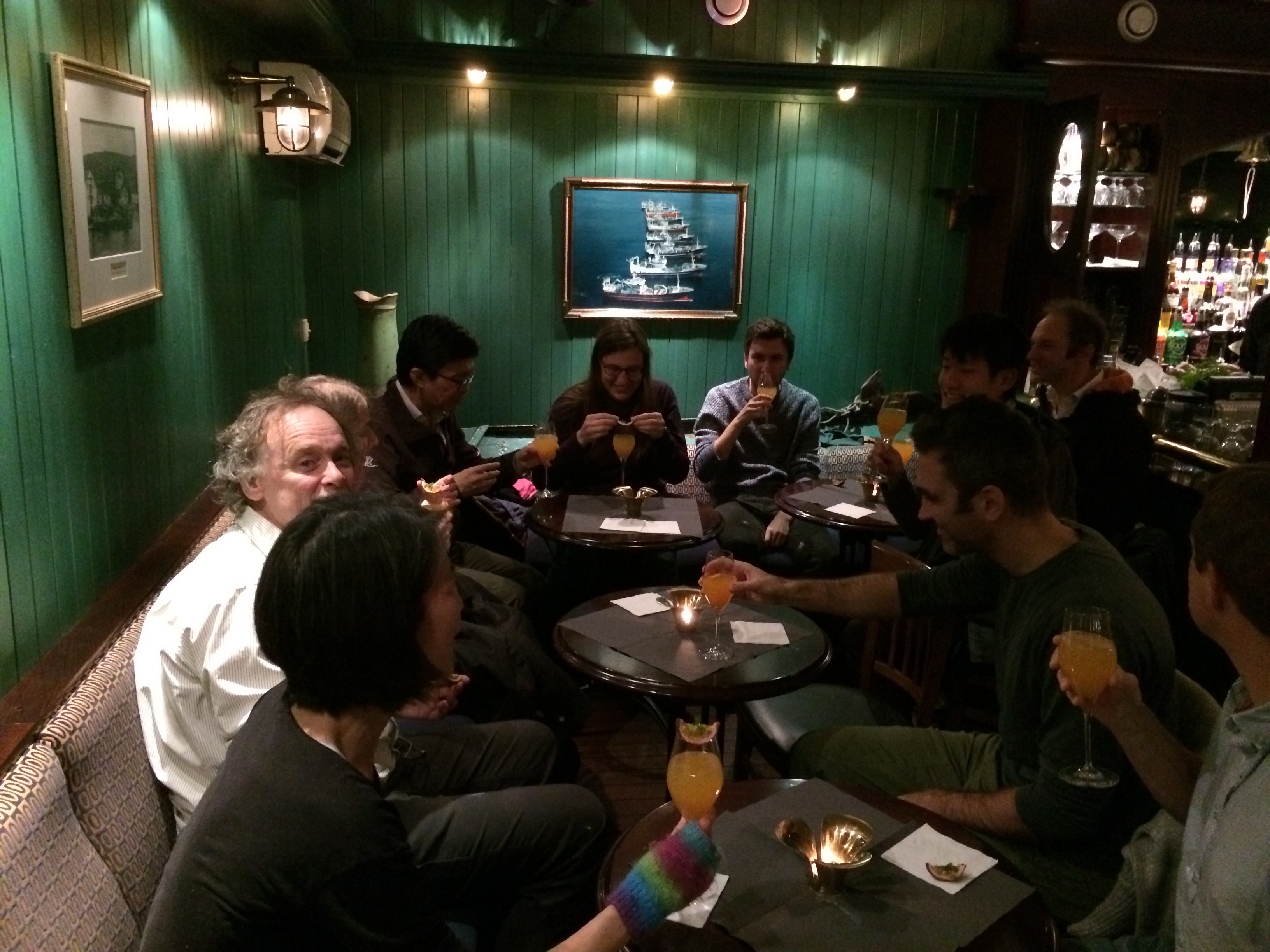29-31 October 2018, Bekkjarvik, Norway
By Stina Olandersson and Peter Siew
Link to schedule
A group of scientists from the large-scale dynamics group had an autumn retreat in Bekkjarvik, Norway 29-31 October. Apart from the folks in Bergen, some guests were invited to participate, including David Battisti (University of Washington), Justin Wettstein (Oregon State University), Tim Woollings (University of Oxford) and William Roberts (Northumbria university). The aim of this workshop was to explore how the weather and climate interact in midlatitudes, and their combined role in setting the midlatitude circulation of the Northern Hemisphere.
After a one hour boat trip in the morning on 29 October we arrived on the island in Bekkjarvik. We started with two introductory talks. They were about how large-scale and synoptic processes influence the circulation (Camille, Erica and Clio). Because of the good weather, we spent some hours out in the sun after lunch, walking up on the 200m hill nearby with a view over the islands nearby, a wind farm park, and snowy mountains on Hardangervidda in the horizon. After enjoying the beautiful scenery, Tim talked about the jet stream from climate and weather perspectives. Justin gave a lecture about comparing jet (3-D) and pressure (2-D) variability across timescales. The first day was ended by a delicious three-course dinner.
On the second day, it was time for some of us to present our homework (i.e., a short presentation of a topic we are working on and related to weather-climate interactions). These short presentations were given in order to initiate discussions and to get feedback from others. We discussed the jet stream and internal variability in relation to model biases (Stina), disparity of signal-to-noise ratios between models and reality (Martin), and drivers of recent near-surface decadal warming over northern Canada and Greenland (Fumiaki). Later on, David gave a lecture about the physics of the Pacific decadal oscillation and Atlantic multidecadal oscillation. In the afternoon, Will gave a talk which focused on the effects of topographic and thermal forcings on the stationary waves and storm tracks, and there was a talk from Clio about the roles of forcing and internal variability in shaping the ENSO response. Before another three-course dinner the rainy weather came back and we finished with a talk given by Camille, about what causes the Dansgaard-Oeschger events.
The last day we continued with the homework presentations. Peter initiated discussions about the relationship between Barents-Kara sea ice and Ural sea level pressure across timescales. We thereafter discussed with Etienne about his presentation focusing on drivers of Arctic temperature variability from the weather and climate perspectives. Finally, Linling talked about the changes in meandering of the Northern Hemisphere circulation under Arctic amplification. The sky was partly cloudy, but no rain was falling when we finished the retreat with a final discussion, aiming to summarize the three days on the island. During the retreat we achieved what we aimed for – to exchange ideas as well as to consolidate our friendships.







